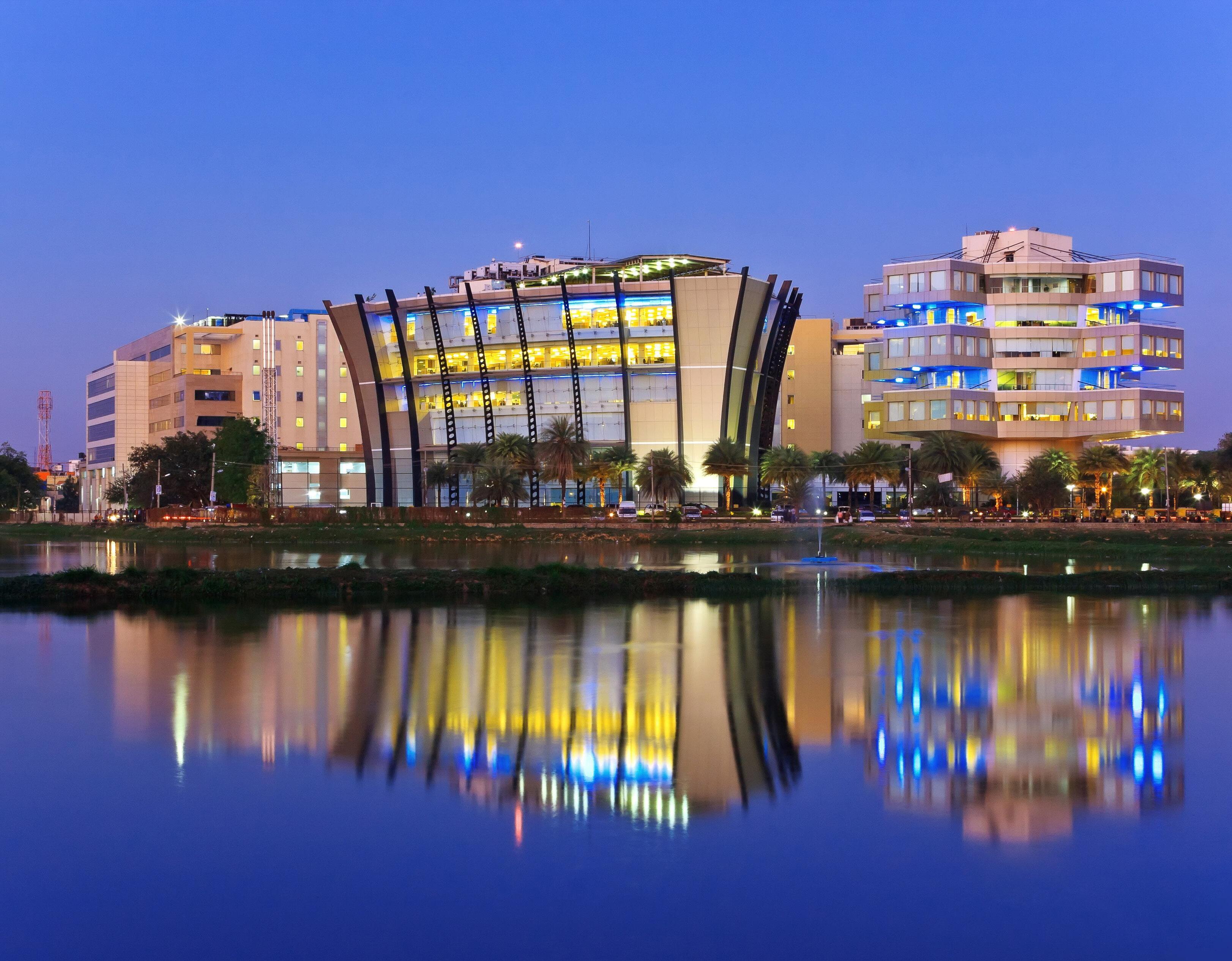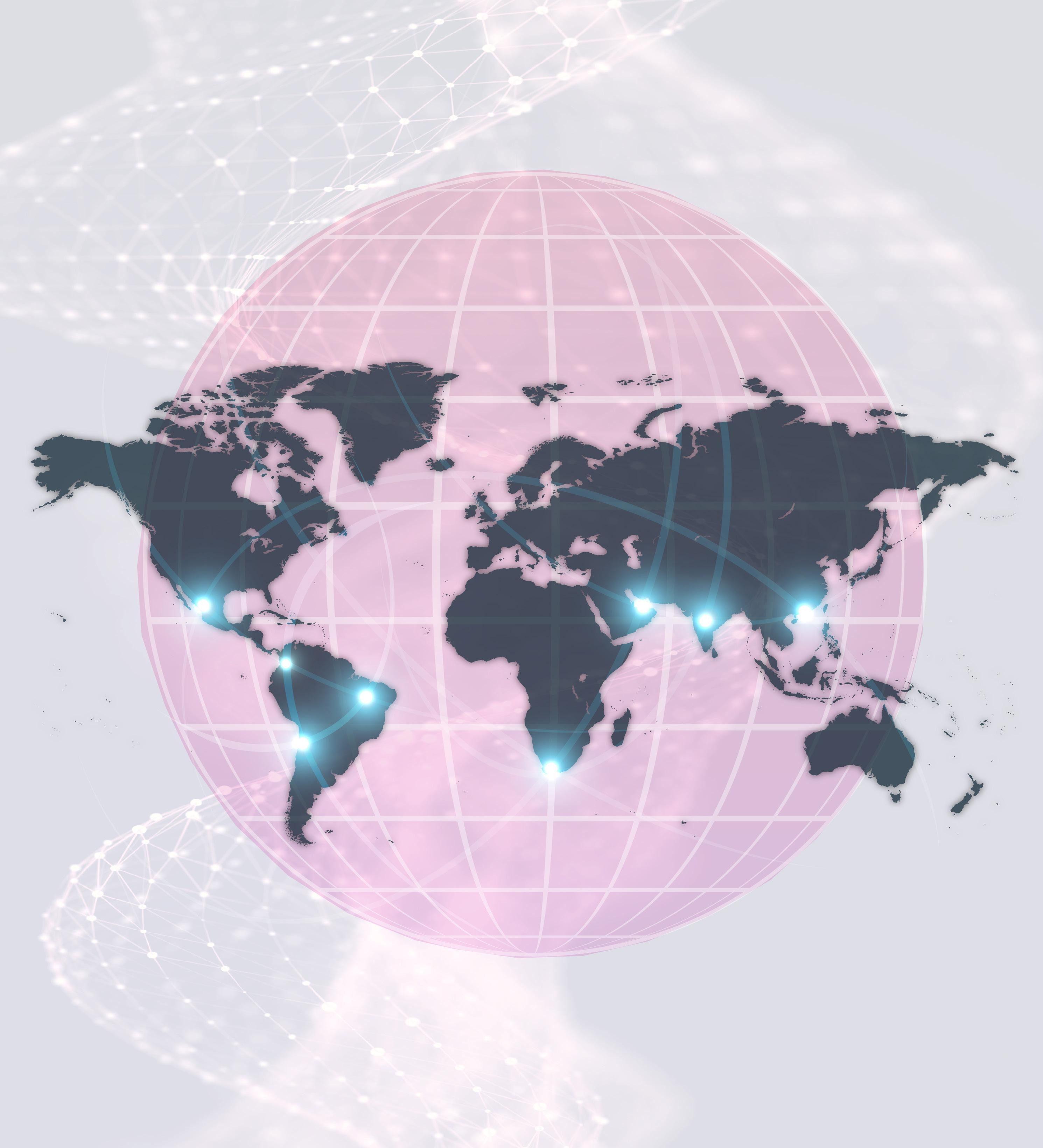
PART 4: INDIA & CHILE








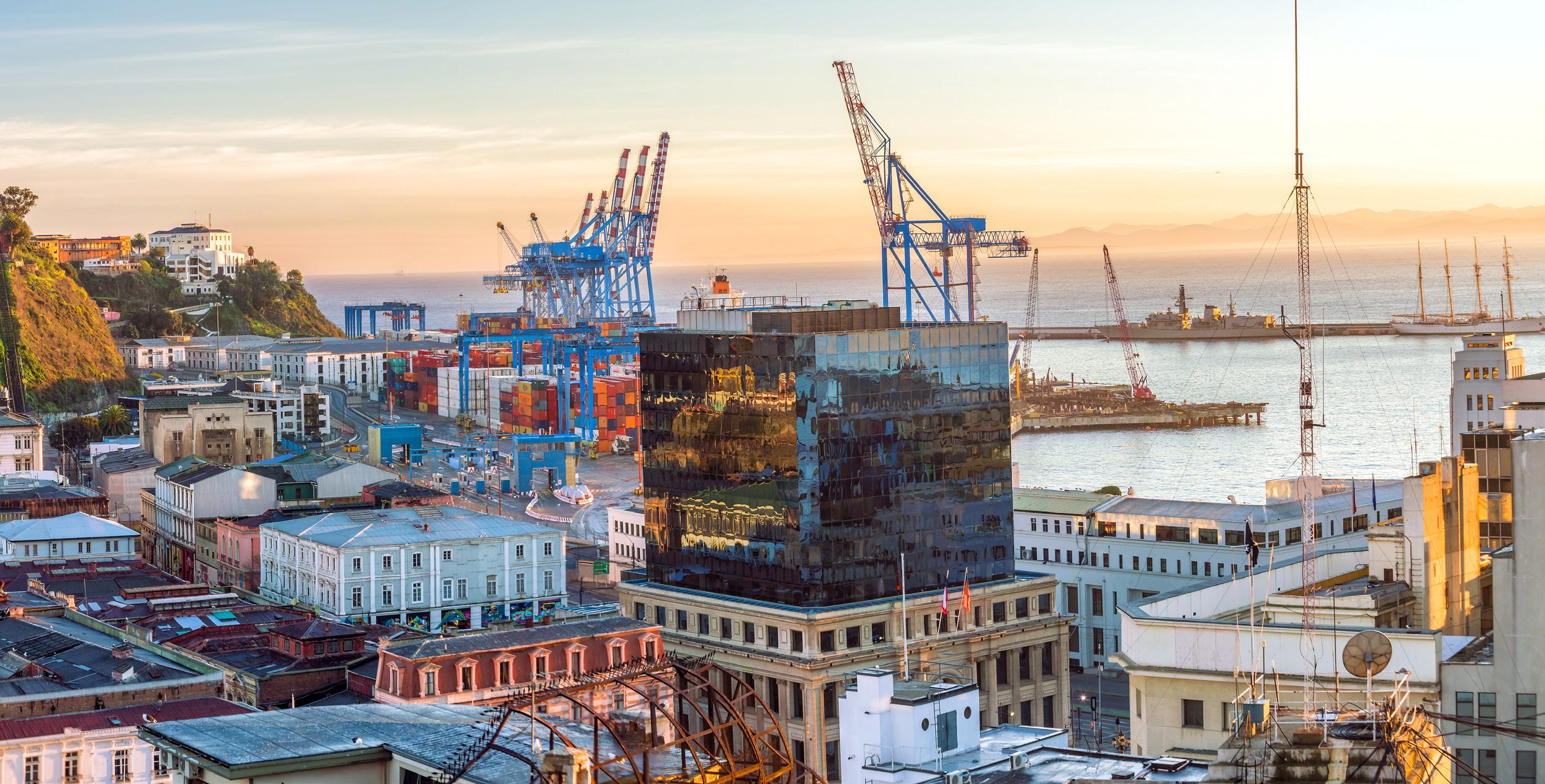
What this report aims to do
In the fourth edition of Nuvei’s Global Expansion Guide, we turn our attention to India & Chile; two countries exhibiting many of the hallmarks of dynamic, high-growth markets. India is home to the world’s largest population and fastestgrowing economy. UPI, India’s purpose-built payment system has become the world’s largest real-time payments system by volume . Driven by government investment and the emergence of fintech-powered payment solutions, the country is witnessing a fundamental shift in how its consumers transact online.
Chile is one of Latin America’s most stable, high-income nations with strong cross-border commerce activity. Meanwhile, Chile is fast maturing into a digital-first eCommerce market, with near-universal internet access, high card usage, and a regulatory environment that actively encourages cross-border digital trade. They represent unique gateways into South Asia and Latin America, offering diverse challenges - and big opportunitiesfor international merchants.
This report will unpack the core growth drivers, payment trends, and consumer behaviors shaping India and Chile today.
It will also highlight the key regulatory and infrastructure barriers that international merchants must plan for, exploring the role of emerging technologies – namely, AI and real-time paymentsin future-proofing digital commerce in these regions.
About Nuvei Nuvei offers global payment expertise and adopts a consultative approach to payment solutions. Our approach includes offering proprietary market insights that merchants can actively use to enrich their growth strategies.
This guide, part of our global series , is designed to support businesses in navigating the complexities of international expansion, including meeting localized consumer expectations or shifting payment regulations.
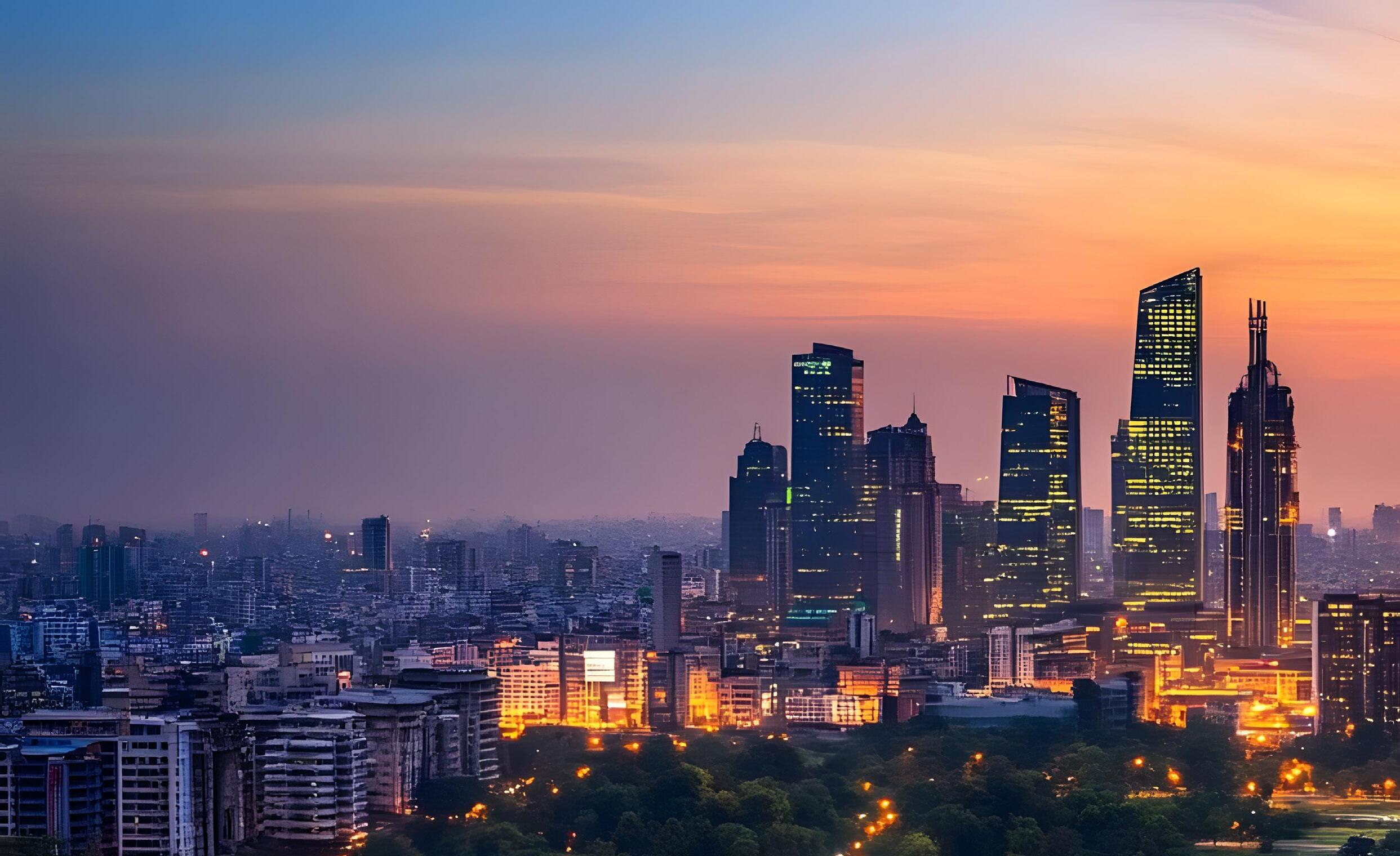

The rising importance of high-growth markets
With expanding consumer populations, increasing internet access, and rapidly modernizing financial infrastructure, India and Chile are growing fast, with more people online and better financial systems. For merchants, these countries offer big opportunities to grow globally and get ahead.
However, India and Chile illustrate two distinct paths to high-growth status:
• India, with a population of over 1.4 billion is several times larger than the populations of the U.S. (4x larger) and Europe (2x larger). Combined with a 2025 GDP of $4.19 trillion (the fourth largest globally) and sustained economic growth rate averaging at 8.2% YoY since 2021 – India is undoubtedly a scale-driven giant1
• A young, tech-savvy population has primed the nation for digital transformation, too
• Government-backed initiatives like Digital India and the explosive growth of realtime payment platforms have catapulted billions of Indians into the formal digital economy
• E-commerce, once confined to urban centers, is now growing fastest in the more remote states, propelled by smartphone adoption and improved lastmile delivery services
• Chile, on the other hand, represents a mature, high-income economy within Latin America. At 19.86 million people, with a GDP per capita of over US$17,000, it ranks as a relatively wealthy Latin American country, ahead of Argentina ($14,187) and Mexico ($13,790)2
• A major distributor of agricultural goods and world-leader in copper, lithium and iodine production, Chile combines strong purchasing power with a business-friendly regulatory framework and deep global trade integration
• With 33 free trade agreements covering 88% of the world’s GDP, and comparatively low regional import tariffs, Chile offers one of the most accessible routes for international merchants to expand in the region.3 Its eCommerce penetration rate soared to 89% in 2024 (up from 58% in 2020), and cross-border transactions already account for nearly a quarter of online sales4
What this means for merchants
India and Chile differ in their scale, infrastructure, and payment behavior. India’s speed of growth in the last decade has been staggering. Even with projected slowdowns between 2024-25, it’s expected to remain the world’s fastest-growing economy.
A sizable talent pool, improving infrastructure and a blooming consumer base have led analysts to consider India a promising long-term investment destination.
Chile, meanwhile, sits at the other end of the population spectrum. However, it boasts a well-established position in LATAM’s trade routes, a population with relative financial stability, and big potential for growth, particularly within its renewable and mining sectors.
From mobile-first purchasing in India to card-dominant consumer behavior in Chile, success in these markets is going to be all about meeting consumers where they are - digitally, culturally, and financially. For merchants willing to tailor their approach and understand the respective payment landscapes, both India and Chile have considerable appeal.
The rise of markets like India and Chile is driven by a convergence of demographic, economic, and technological forces. While their trajectories differ, both countries showcase the core attributes that define high-growth economies: young, connected populations; increasing financial inclusion; and a willingness to adopt new digital behaviors at scale.
Mobile is king
The digitizing & the digitized
• India’s median age is currently 28.8, with a digitally native generation driving eCommerce growth and payment innovation. In 2024 alone, the country was projected to gain 33 million new consumers (expected to spend an avg. ~$12/day), a reflection of an expanding middle class with more disposable income.5 Digital inclusion is no longer confined to India’s wealthy or city-dwelling population, with internet penetration having exceeded 55% as of 20256. Rising rates of financial account ownership, a booming ‘social commerce’ sector and emergence of concepts like ‘hyperlocal deliveries’ are pushing Indian consumers to turn online to access broader product selections and better prices
• Chile’s demographic profile is older, with a median age of nearly 36.9, but its digital maturity is among the highest in Latin America. Internet penetration exceeded 94% in 2023, 70% of which is fiber-optic.7 Mobile phone subscriptions exceed the total population, indicating multidevice usage is common. This degree of connectivity means consumer expectations are high, with seamless digital shopping and secure, fast payments now seen as standard to remain competitive
lion-to-5-billion-people-by-2031/, accessed August 2024. 6Internet penetration rate in India from 2014 to 2025; Statista Chile:
• India’s digital transformation is being accelerated by the government’s instrumental Digital India initiative, which has dramatically improved internet access and digital literacy across rural and urban areas. More than 77% of adults now have financial accounts, up from just 35% in 2011. According to the G20, the DII’s impact has accelerated “a journey that would otherwise have taken 47 years through traditional means” for the Indian economy.8 Combined with the development of public digital infrastructure, particularly the highly popular Unified Payments Interface (UPI), have been major drivers of free, real-time payments across the country, too
• Chile benefits from a highly banked population, with 97% having access to financial services, including digital wallets.9 As one of the most stable economies in LATAM, Chile has created a favorable environment for doing business. Ranked at 59th in the World Bank’s final ‘Ease of Doing Business’ report in 2020, it placed above Brazil (124th), Colombia (67th) and Mexico (60th).10 An economy fostered on transparency, diplomacy and low import barriers make it one of the simplest LATAM markets for foreign merchants to enter without needing a local legal entity
These two markets share an important characteristic: mobile phones are the primary driver of digital commerce.
In India, 77% of online sales occurred via smartphones in 2025, a figure expected to grow to 80% by 2027.11 Commerce via social media apps like Instagram, Whatsapp and Meta, plus the surge in delivery apps, is further entrenching mobile behaviors.
In Chile, while mobile accounts for a smaller market share (58%), this represents a rapid climb from 32% just four years earlier - a shift that illustrates the pace of localized mobile usage for online spending.12
What this means for merchants
The convergence of these drivers makes India and Chile prime examples of how high-growth markets are not just catching up but overtaking traditional models and setting new standards for digital commerce adoption.

India’s scale is unmatched. Digital infrastructure - spearheaded by initiatives like UPI and Aadhaar – is moving the needle on underbanked, rural and disconnected communities. Despite eCommerce penetration remaining relatively low at 27%, this seems to signal vast untapped potential rather than stagnant growth. India’s eCommerce volume remains very high even with less than a 30% eCommerce penetration across the country.13
Cross-border transactions are also on the rise, with sales reaching US$22.1 billion of eCommerce volume in 2025 , or 10% of the total. With no signs of slowing down, international sales are expected to increase to US$ 29.6 billion by 2027 (11% of the total), at a CAGR of 15% (2023-2027).14 Verticals contributing the most to this trend include international fashion, electronics, and travel products – a possible result of the young, educated, tech-savvy population driving economic activity.
India’s eCommerce ecosystem is also highly competitive, with platforms like Flipkart, Amazon, and local giants such as JioMart battling for market share. The growing importance of mobile-first and social commerce - especially in ‘Tier 2’ cities like Jaipur and Tier 3 cities like Amritsar - adds additional opportunities for global merchants willing to localize and adapt in less competitive, ‘westernized’ markets.
In India, the “tier system” typically refers to the classification of cities based on their population, economic activity, and infrastructure. Cities are often categorized into Tier 1, Tier 2, and Tier 3, with Tier 1 representing the largest metropolitan areas and Tier 3 encompassing smaller cities and towns.
India is still undergoing one of the most rapid digital transformations of any major economy. With a young, mobile-first population and the Central Government’s prioritization on digital infrastructure, it’s a country that, with smart localization strategy, has plenty of untapped potential, despite the substantial market volumes already present.
India’s eCommerce market reached US$181.9 billion in 2024, and is forecast to grow at a 16% CAGR, reaching US$274.2 billion by 2027 – with less than a third (27%) market penetration.15 In contrast, China’s eCommerce penetration stands at 47%, while the U.S. exceeds 50%, highlighting the vast headroom for growth still available in India.
Tier two and three cities, and their countless satellite towns, are driving a surprising share of spend, even outpacing some Tier one competitors. Price-conscious consumers with mobile access are viewing online platforms to access a wider assortment of goods not available, or affordable, locally.
India’s eCommerce is diversifying rapidly beyond traditional retail:
• Online retail accounts for 42% of eCommerce volume, projected to hit US$130.8B by 2027
• Travel represents 14% of the market and is forecast to grow at 18% CAGR ($38.7bn by 2027), driven by platforms like MakeMyTrip, Cleartrip, and Booking.com. Mckinsey estimates an annual growth in travel spending in India of 9% until 2030, underlining the compounding growth the online travel sector is experiencing
• Ride-hailing and delivery apps (e.g., Uber, Ola) make up 10% of eCommerce volume, with rapid growth driven by urban mobility and food delivery needs
• Hyperlocal delivery, or “quick commerce,” (defined as rapid delivery of goods or services within a small geographic area like a neighborhood or small city) is emerging in major cities, with players like Blinkit, Zepto, and Swiggy Instamart enabling delivery times of under 15 minutes
India’s tourism economy is also fueling online travel growth. With a wide variety of niche experiences (e.g., medical, wellness, adventure, and spiritual tourism), the country supports over 1,500 travel startups, according to Startup India.16 These startups are enabling the planning and booking of travel services or assistance travel service providers with technology solutions.
and mobile commerce on the rise
India is one of the global leaders in mobile-first shopping. In 2025, 77% of all eCommerce transactions took place on mobile, and that figure is expected to hit 80% by 2027.17
In parallel, social commerceshopping directly through platforms like Instagram, Facebook, and WhatsApp - is becoming mainstream, particularly in fashion and beauty. In fact, according to a study by ISB Institute of Data Science and Ecom Express, the fashion and accessories category represents 60% of e-retail transactions by volume, followed by beauty, cosmetics and toiletries
(11%); electronic gadgets (10%); home, kitchen & office (8%); and health, sports and fitness (5%).18
Deloitte forecasts this segment alone could represent a US$55B opportunity by 2030 19 As access expands and infrastructure improves, India’s digital commerce ecosystem is not only growing - it’s arguably redefining what eCommerce might look like for the next billion consumers.
Price sensitivity among Indian consumers, likely driven by high mobile penetration, appears to be high.
• Around 66% “almost always” or “frequently” use their smartphone to research a product online for competitive prices, special offers and availability (versus 56% of the global figure)20
• Buyers are also concerned about returns policies, with 57% of them using their smartphones to get information about these policies21
In interviews conducted, industry stakeholders reported that hiring local employees has been crucial for gaining valuable market insights and adapting products and services to local tastes and cultural preferences. Another effective strategy has been entering the Indian market through strategic alliances with local groups or partners who have a strong presence and deep understanding of the market.
17 PCMI 18“E-Commerce Boom in India: Current Trends and Prospects,” Invest India https://www.investindia.gov.in/team-india-blogs/e-commerce-boom-india-current-trends-and-prospects, accessed October 2024. 19“‘Social Commerce Set for Growth, Concern of Authenticity Looms Large,’” Business Standard, April 7, 2024. https://www.business-standard.com/industry/news/social-commerce-set-for-growth-concernof-authenticity-looms-large-124040700339_1.html, accessed October 2024. 20 “Global Consumer Insights Pulse Survey: India Perspective,” PricewaterhouseCoopers, June 2023. 21 “Global Consumer Insights Pulse Survey: India Perspective,” PricewaterhouseCoopers, June 2023. 22Est. for 2015. CIA – The World Factbook, https://www.cia.gov/the-world-factbook/countries/united-arab-emirates/summaries/#:~:text=Ethnic%20 groups,12.8%25%20(2015%20est.), accessed September 2024.
India’s payment landscape transformation has largely been driven by the success of landmark developments like the Unified Payments Interface (UPI), a major part of a government-led push for financial inclusion. As a result of this focus, payment preferences have shifted decisively away from cash and towards mobile payments, digital wallets and internationally enabled cards.
A global benchmark for real-time payments
Launched in 2016 by the National Payments Corporation of India (NPCI), UPI has become the world’s largest real-time payments system by volume.
It allows instant, free transfers between bank accounts using virtual payment addresses, QR codes, or mobile apps. UPI adoption surged following the pandemic and the removal of transaction fees, and by 2023, it had facilitated over 100 billion transactions.
• UPI share of eCommerce payments: 53% in 2023, projected to rise to 57% by 2027
• UPI also accounts for the steep decline in cash usage, with cash’s POS share falling from 71% to 18% since the pandemic
• The system has proven to be an attractive blueprint; with the NCPI signing deals to expand UPI acceptance in neighboring Sri Lanka, and further afield in France, UAE, Bhutan, Mauritius and Singapore
• Zooming in on UAE, it’s reasonable to expect that UPI use will increase progressively in the UAE, including in eCommerce. First, because the cross-border expansion of this solution is a strong priority for NPCI authorities, who will keep on striving to advance this agenda. Second, because Indians are by far the largest group of foreigners in the UAE, representing around 35% of the country’s populationroughly three times the share of Emiratis22
While UPI dominates, other methods remain significant:
• Internationally23 enabled credit cards captured 37.7% of eCommerce spend in 2023 Their share is projected to grow marginally (13% CAGR from 2327), as new localized payment rails begin to mature.24
• Digital wallets such as PayTM and PhonePe (with over 300M and 500M users respectively) held a 15.3% share in 2025 and are expected to grow at 21% CAGR to US$21.9B by 2027.25
• Domestic debit cards also represent 14.3% of eCommerce spend in 2025, growing at 16% CAGR through 2027.26
• Buy Now, Pay Later (BNPL) is emerging, with a small market share today but growing at 24% CAGR, supported by providers like LazyPay, Zest, and Flipkart.
Given that such a large proportion (77%) of eCommerce transactions occur via mobile in India, payment systems typically need to be optimized for in-app and mobile web checkout. Consumers, now largely comfortable with digital checkouts, have come to expect features like instant confirmation, biometric security, and minimal friction.
Merchants should be more encouraged to adopt mobile-friendly payment interfaces and fraud protections when building for an Indian consumer base. India’s payment ecosystem may be catching up with the cutting edge in payments, but it’s setting standards in volume and scale as an emerging market embracing digital payments.
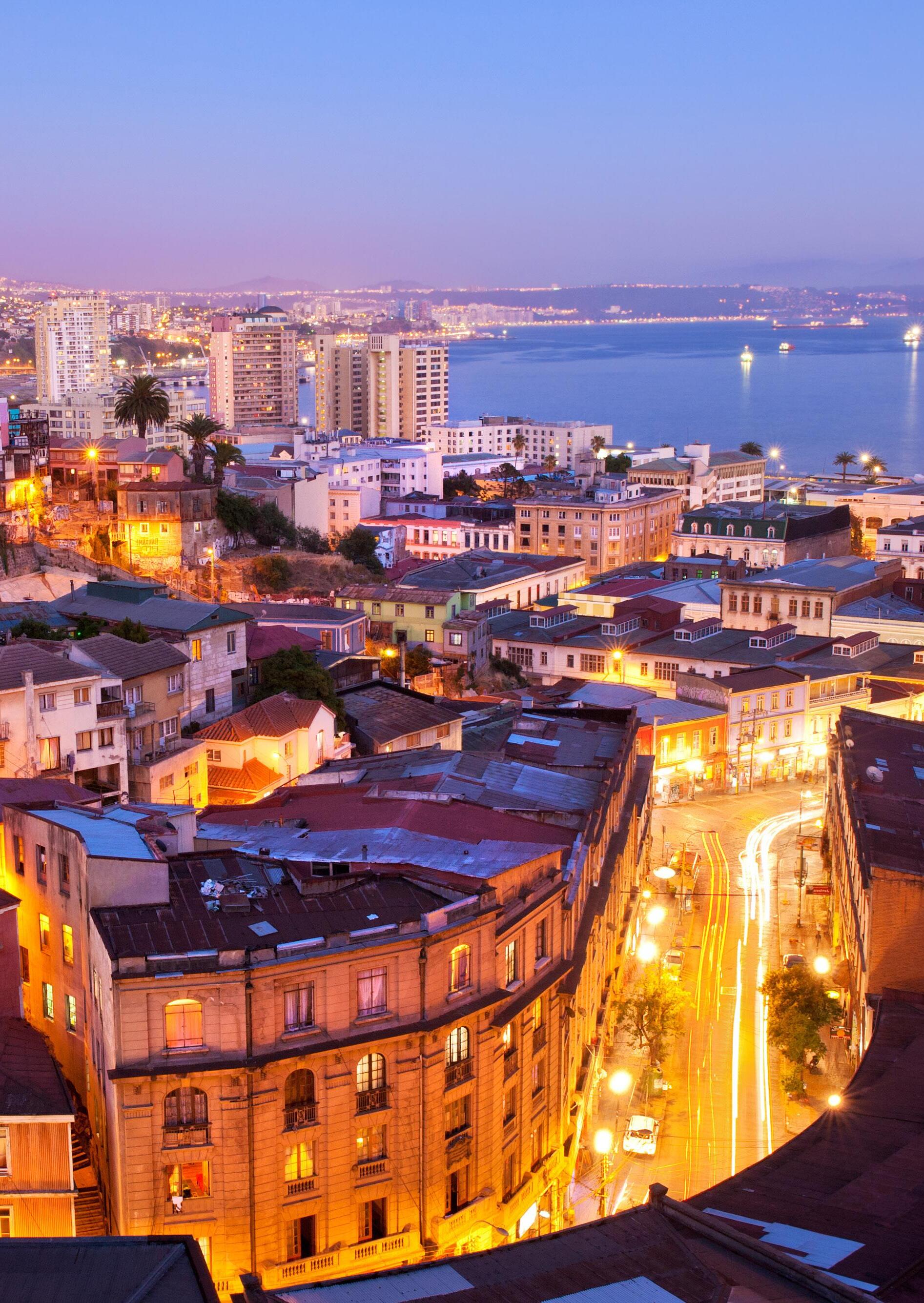
Chile Chile offers a different type of opportunity. With the second-highest income per capita in South America and a highly digitized population, it’s a mature, stable market well-suited for international expansion. Card usage, digital wallets and mobile payments are the norm for Chile’s discerning consumer base. With popular eCommerce categories including clothing (over half - 52% - of Chilean consumers say they shop online for clothes), food (26%), technology (25%) and beauty (24%), cross-border eCommerce is booming in Chile. Of the eight countries we analyzed, 23% of Chile’s total eCommerce volume was a result of cross-border activity - the highest share of cross-border sales in LATAM.27
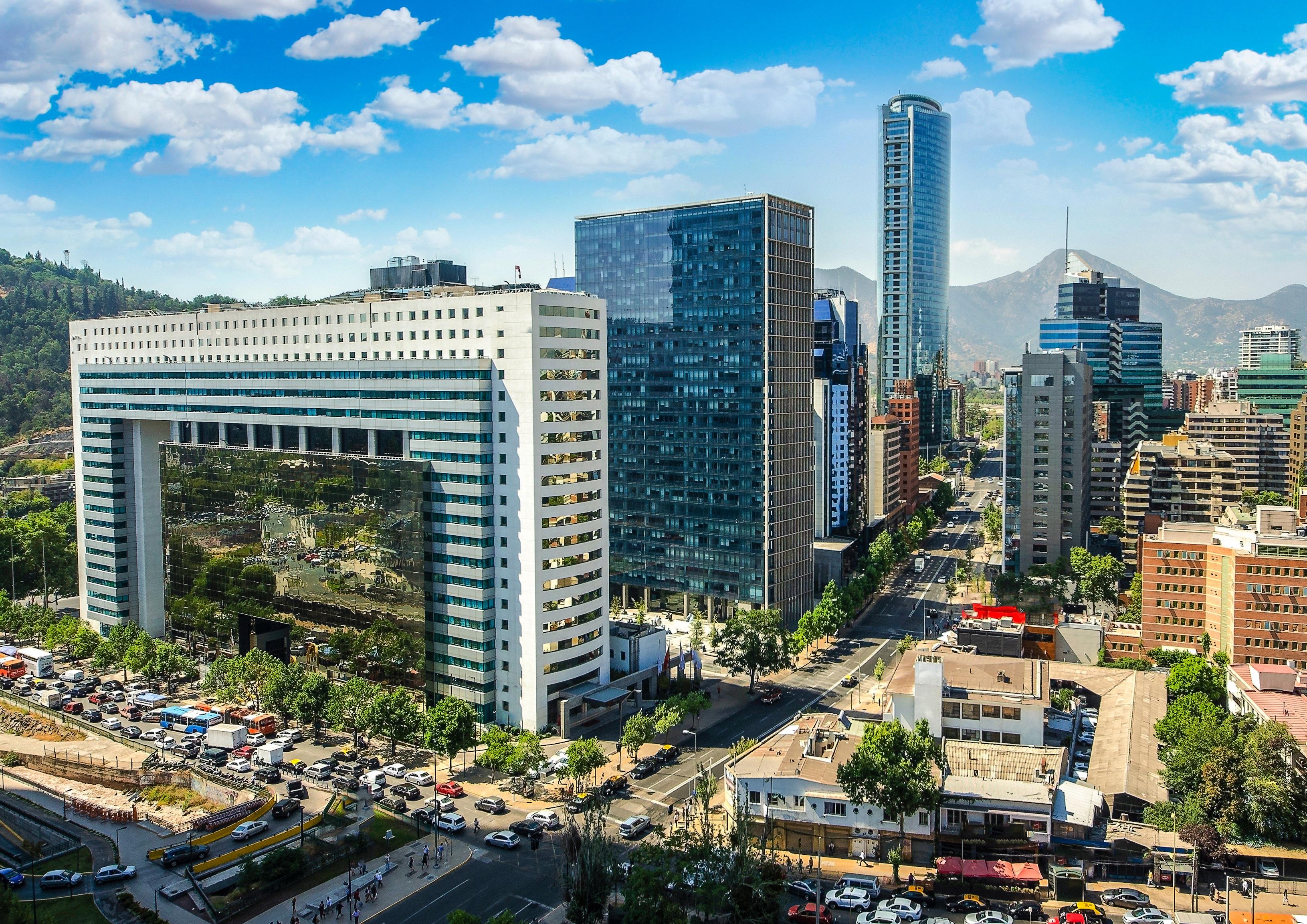
Cross-border commerce is normalized - facilitated by low import tariffs, an efficient regulatory environment, and widespread access to internationally enabled credit cards. As mentioned, Chile’s business-friendly regulations mean foreign merchants can enter the market without establishing a local entity, reducing operational complexity.
Chilean digital infrastructure rivals that of more developed economies like Hong Kong or UAE – a profile built on strong card adoption rates, rising use of digital wallets, and increasing demand for convenience-led services like ride-hailing and ‘last-mile’ grocery delivery apps.
Chile stands out in Latin America as one of its most digitally advanced and economically stable markets. With one of the highest internet penetration rates in the region and strong purchasing power, the country offers an attractive launchpad for merchants expanding into South America - particularly those targeting cross-border growth.
A mature and accessible eCommerce landscape
Chile’s eCommerce volume reached US$35.3 billion in 2024 and is projected to grow at a 10% CAGR, hitting up to US$45.7 billion by 2027
Online shopping is almost a ubiquitous practice amongst consumers, with 89% eCommerce penetration in 2024, up from 58% just four years prior.28
Online retail dominates within that trend, accounting for 69% of eCommerce volume, with strong growth expected through 2027. Within that rise, cross-border commerce is also surging: 26% of eCommerce sales in 2025 came from international merchants - a figure projected to reach 28% by 2027 29
We can largely pin this on Chile’s business-friendly regulatory environment. Compared to other LATAM countries, Chile has laid the groundwork for swift market entry from newcomers and easy access to international trade.
is king
• Mobile commerce accounted for 61% of online transactions in 2025, up from just 32% in 2019, signifying a huge leap in consumer preference for mobile-first shopping and the need for merchants to optimize digital experiences for smartphones
• Fastest-growing sectors include:
– Online retail (66% market share in 2025)
– Ride-hailing and delivery apps, growing at 21% CAGR (e.g., Rappi, PedidosYa, Uber Eats)
– Travel, growing at 9% CAGR, reaching US$6.3B by 2027
– SaaS, growing at 16% CAGR, indicating an increasingly B2B-friendly digital economy
Chileans are tech-savvy and increasingly expect convenience, reliability, and cross-border access.
Source: PCMI
The average Chilean consumer is used to shopping at large retailers; 64% reported using the large retailers and supermarkets like Mercade Libre, Paris, Falabella, Lider and Ripley most often when shopping online. It’s therefore no surprise that the most popular product categories being purchased online in Chile include fashion, electronics, and food.30
The average Chilean consumer is typically aged between 26-40 years old, and 36% of the online consumer base falls into socioeconomic group D, placing them in the lower-middle or working class.31
This data indicates that Chile is a consumer base not limited by social status or earnings, and consumers have access to established, modern brands that can support a wide range of digital payment methods.
In short, international merchants can expect Chile to provide a stable, scalable environment with relatively low entry barriers and a consumer base that is already well-accustomed to shopping globally.
Chile’s payment ecosystem is one of the more mature in Latin America, characterized by widespread card usage, high financial inclusion, and strong support for cross-border spending. Provided merchants can align with local consumer preferences for convenience, security, and card-friendly checkout experiences, it’s a relatively straightforward market to enter.
In stark contrast to many other high-growth markets, international credit cards are the leading eCommerce payment method in Chile, accounting for 58% of online spend in 2024, and projected to
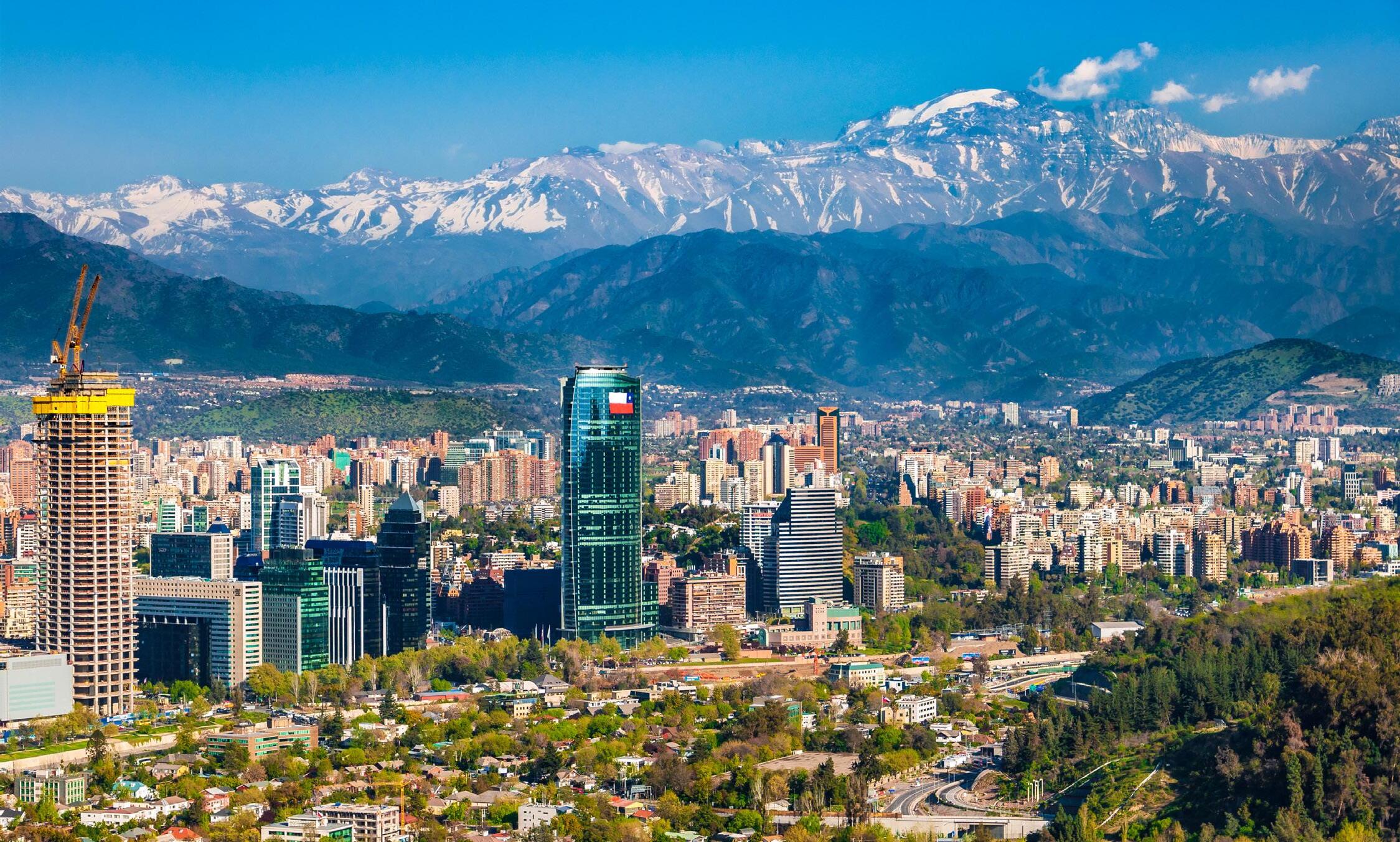
Source: PCMI
• Debit cards account for an additional 20%, bringing the total card share to over three-quarters of eCommerce volume
• Bank transfers and digital wallets are emerging sectors, with 9% and 7% of market share respectively
2027. The country’s high bank penetration rate (97%) and consumer confidence in card-based payments have contributed to this dominance.
• Indirect cash payments, like gift cards, vouchers, cash-delivery and prepaid codes, account for only 2% of online spending
• Domestic-only credit cards, however, are in decline - falling from 2% in 2024 to a projected 1% by 202732
As a rule, merchants entering Chile may want to ensure their platforms accept internationally enabled cards (Visa, Mastercard, American Express) to minimize cart abandonment.
While card payments dominate, we note that digital wallets and bank transfers have ground to make up, with neither method accounting for more than a tenth of total online spend in Chile.
However, they show signs of growth:
• Wallets held a 7% share in 2024 , with notable providers including Mach and MercadoPago. These established providers have proven scalability elsewhere in LATAM
Chile’s consumers are digitally sophisticated and accustomed to fast, frictionless checkout flows. As mobile commerce increasesprojected to reach well over 60% by 2027 - there will be an associated demand for features like tokenized payments, saved card credentials, and compatibility with mobile wallets. Additionally, installment payments remain a common feature of credit purchases, and especially of higherticket items.
• Bank transfers captured 9%, often being used for larger purchases or recurring payments, with services like Khipu enabling simplified transfer experiences
These alternative methods are most popular among younger consumers and digitally native users, especially in mobile commerce environments. It’s likely they will grow in prevalence as new generations enter working age.
While India and Chile offer immense growth potential, they also present regulatory, operational, and consumer-related hurdles that can complicate market entry. Merchants looking to expand must be prepared to address local nuances, including logistics, data protection, taxation, or consumer trust.
India’s regulatory environment is racing to keep pace with a growing consumer base and digital economy.
The government has introduced several landmark frameworks to strengthen eCommerce governance and data protection:
To succeed in Chile, merchants should focus on a card-centric checkout experience, supplemented by wallets and bank transfer options to meet emerging demand. Ensuring multi-currency support and clear tax handling is also vital, particularly for cross-border sellers.
• Digital Personal Data Protection Act (2023) establishes rules on how companies collect, store, and use consumer data
• The Information Technology Act (2000) is the effective foundation of India’s legal framework for governing e-commerce. It contains provisions safeguarding customers’ private information and imposing penalties on cybercrime
• Consumer Protection Rules (2020) governs over, and safeguards consumers, on issues like refunds, returns, and product quality
• Foreign businesses must partner with an Indian entity or distributor and navigate high import duties and the Integrated Goods and Services Tax (IGST) —which can reach 28%
Outside of tiered cities, India’s rural areas can prove very challenging logistically. Delivery networks and warehousing infrastructure are still maturing and are well behind more developed countries considered to be ‘high growth’.
Fraud prevention and consumer trust are other critical areas. Merchants should consider robust identity verification systems and educate users on secure payment practices to build trust and reduce cart abandonment.
Chile’s regulatory landscape is comparatively straightforward, especially for foreign merchants.
The critical feature of their regulatory framework is not requiring a local entity when operating across borders in Chile. Customs processes are also notably more streamlined than other South American counterparts. However, compliance with local eCommerce laws is essential:
• The 2022 eCommerce Law mandates transparency around pricing, payment terms, stock availability, and delivery timelines
• Data protection is governed by the Law on Protection of Personal Data, with future reforms expected to align with EU-style privacy standards
Foreign digital services are subject to a 19% VAT, and while low-value, infrequent purchases under $30USD may be exempt. Consistent crossborder sellers must therefore ensure tax compliance.
Despite high digital literacy, particularly amongst younger consumers, fraud concerns persist in both markets. Indian consumers - especially those in Tier 2 and Tier 3 cities - are becoming increasingly security-conscious. They expect multi-factor authentication, UPI integration, and real-time confirmation of payments, along with localized language support and mobile-friendly design. Seamless app-based checkout experiences, biometric login, and OTP-based verification are considered baseline expectations.
In both India and Chile, tokenization, SSL encryption, and responsive mobile design are essential features that signal credibility and security to the end-user.
As digital commerce matures, the next wave of progress will be shaped by technologies that enhance speed, security, and personalization across the payment experience. For merchants, staying ahead of the curve means preparing for a more intelligent, interoperable, and consumer-centric payment ecosystem.
Real-time payments and infrastructure expansion
India continues to set an emerging market benchmark for real-time payment volumes through UPI, which now processes billions of transactions monthly with zero transaction fees. The system is evolving to support recurring payments, enhanced fraud detection, and cross-border capabilities.
With the announcement that UPI acceptance is set to expand to Singapore, UAE, and France, India is setting a precedent.
Its role as a national digital payment infrastructure will likely be replicated by other emerging markets in the years ahead.
Chile is still card-dominant, but is beginning to embrace alternative and real-time payment options such as Khipu for bank transfers and wallet integrations through MercadoPago and MACH. As demand for faster checkout increases, especially on mobile, the adoption of real-time systems is expected to accelerate.

Both markets are experiencing rising exposure to online fraud, particularly in mobile and cross-border transactions. AI and machine learning are becoming essential tools in fighting fraud, reducing false declines, and optimizing conversion:
• In India, where price sensitivity is high, AI is also being deployed to
manage dynamic pricing and promotional strategies.
Retail leaders like Flipkart, Amazon India, Myntra, Nykaa and Meesho leverage AI for dynamic pricing, demand forecasting, and hyper-local promotional strategiesdelivering real-time price adjustments based on demand, competition, seasonal trends, and inventory levels
• Major Chilean omnichannel retailers - including Falabella and Cencosud - are deploying AI-driven analytics for demand forecasting, inventory optimization, dynamic merchandising, and personalized promotions
to lift conversion rates and deepen customer loyalty across eCommerce and store networks. At the market level, Chile’s competitive digital commerce sector is accelerating investment in AI/ ML commerce platforms to deliver more personalized shopping experiences, strengthen retention programs, and improve operational efficiency as mobile usage rises
• The Latin America AI in Retail market sees Chile holding approximately 12% share, with applications particularly growing in supply chain optimization, customer experience and personalized marketing33
For international merchants, AI-driven fraud tools are increasingly required to meet local expectations around transaction security and real-time risk assessment.
In India, super-app ecosystems - like PhonePe and PayTM - are integrating payments with insurance, lending, and savings products, creating full purchasing journeys inside a single interface. Similarly, social commerce in India continues to expand, with platforms like WhatsApp, TikTok and Instagram becoming increasingly relied upon for product selection, sales and payment channels.
Chile’s growing adoption of digital wallets and mobile-first behaviors
indicates a similar shift toward more embedded finance use cases, especially as installment payments and loyalty programs become standardized.
As global technology continues to filter into these markets, and local players continue to adopt them and innovate, merchants must prepare for competitive landscapes where speed, personalization, and trust define the payment experience.
India and Chile exemplify two new frontiers of global digital commerce. Their differences - in scale, infrastructure, and consumer demographics - underscore the diversity of today’s highest-growth markets. Yet both offer compelling opportunities for merchants ready to expand strategically, with tailored solutions that reflect local expectations around payments, technology, and trust.
India presents a vast and fast-moving opportunity, where mobile-first consumers and government-backed infrastructure are redefining how a billion people transact. UPI has become a global reference point for real-time payments, and digital commerce is extending deep into previously underpenetrated regions. For merchants, this means adapting to local systems, anticipating rapid change, and delivering user experiences that feel native - especially on mobile.
Chile, by contrast, offers a stable, high-income market with sophisticated digital behaviors and clear regulatory pathways for international entrants. With high card usage, growing wallet adoption, and a cross-border-friendly business environment, Chile provides an ideal launchpad into Latin America, without the operational complexity often found in the region.
Nuvei's global expertise enables merchants to scale into markets like these with confidence. Through a consultative approach, we help businesses understand consumer preferences, optimize payment strategies, and reduce friction across the checkout experience. Nuvei supports:
• 720+ global and alternative payment methods
• Acceptance in 200+ markets, including cross-border transactions in India and Chile
• AI-powered risk and fraud prevention tools
• Leading digital wallet, card, and real-time payment integrations
• Merchant of Record solutions to simplify tax compliance and reduce operational overhead
For merchants expanding into highgrowth regions, Nuvei is more than a payments provider - we’re a strategic partner, offering insights, technology and support, to maximize your global commercial ambitions and accelerate your revenue.
To develop the data and analysis on each market in the PCMI eCommerce Datapack, PCMI first compiles all publicly available data from official sources, including central banks, banking authorities, company financial reports, chambers of commerce, eCommerce associations, fintech associations, local press, market reports and government statistics, as well as data from the World Bank and affiliated international organizations.
The PCMI team analyzes the data with a critical approach, identifying the holes, errors, and inconsistencies in this data to prepare it for primary research. Then, PCMI conducts interviews with local eCommerce industry stakeholders to clarify, deepen, and streamline data collected via secondary research.
In the 2024 creation of this dataset, PCMI interviewed over 80 eCommerce executives including banks, acquirers, payment gateways, payment service providers, merchants, and consultants. Finally, PCMI conducts a rigorous analysis of the primary and secondary results, leveraging the perspective of our historical data collected since we first began building this dataset in 2015, to arrive at the final results.
The methodology takes a top-down approach, utilizing macro industry data and the perspective of industry aggregators (i.e. acquirers, PSPs) rather than a bottom-up approach, based on consumer surveys.
To the extent possible, the dataset is built using real, official numbers, such as official credit and debit card volumes, bank transfers and other official reporting of payment methods. Primary research combined with institutional knowledge are combined to make the needed estimations and assumptions to arrive at all breakdowns in the dataset. Projections are calculated based on the opinion of industry stakeholders and accounts for factors such as inflation, GDP growth and regulation.
PCMI avoids making projections based on the launch of new products
In this data set, our eCommerce analysis covers all online purchases of goods and services, regardless of the device or payment method used.
Our analysis includes:
• Purchases made by local citizens using all locally-issued payment methods
• Cross-border purchases made with locally issued payment methods
• B2C and B2B purchases that move through an eCommerce checkout
• All product and service verticals, including travel, retail, and digital goods and services

Retail is defined as: All physical products purchased directly from the merchant or marketplace.
Travel is defined as: Travel services including airline tickets, car rentals, tour packages, hotels and AirBnB stays.
Ride hailing and delivery is defined as: Digital services that include services including ride-hailing and delivery apps.
Online gaming is defined as: Spend on online games or in-game purchases, which can be played via mobile, desktop, or a dedicated console. This does not include sports betting, online gambling or games of chance.
Online streaming is defined as: Video and music streaming, typically purchased as a subscription.
Other is defined as: Additional digital goods and services including sports betting and online gambling, online education, digital downloads, mobile top-ups, and recurring purchases such as monthly bills, insurance payments, school tuition payments, home ownership association fees, parking, taxes and government licenses and fees if they are paid online over an eCommerce gateway.
These expenses are not included if they are paid online via online banking or direct debit from a check or savings account.
Recurring payments to a credit or debit card are included, as are one-time payments over an online ACH portal such as Botón PSE in Colombia.
SaaS is defined as: The purchase of software delivery accessed via cloud services, rather than through the installation of said software on a computer or other device. Our data includes SaaS purchases made via an online website/checkout process, including subscription and recurring payment models, i.e. Microsoft Office, Slack, Hubspot, Canva, Dropbox, etc. These may be used for both consumer and business purposes and both are captured in our data.
We do not include SaaS purchases that are not made through an official online checkout, such as invoice payments via online banking or wire transfer.
All locally issued payment methods including:
• Locally issued credit and debit cards, online bank transfers, cash payment platforms such as Oxxo in Mexico or Fawry in Egypt, digital wallets such as PayPal, MercadoPago, ApplePay, cash on delivery, and other miscellaneous payment methods

Please note the following definitions:
Cash Payment is defined as:
A payment platform that enables a shopper to make an online order, receive a bar code or unique PIN and use that bar code or PIN to make the payment in cash at an affiliated retail location. Such platforms often allow payment using an online bank transfer. Examples include Oxxo in Mexico and PagoFácil in Argentina.
Digital wallet:
PCMI defines a digital wallet as a payment method that stores any funding source on file, including a credit card, debit card, bank account, or stored balance, and uses that funding source to remit payment.
eCommerce volume falls into the digital wallet category if the wallet brand is selected at checkout, even if a different funding source (such as a credit card) is ultimately selected as the funding source. Examples include staged wallets such as PayPal, TigoMoney and MercadoPago.
Please note: Tokenized card wallets, or passthrough wallets, such as ApplePay, are included under credit and debit card volume.
Bank Transfers:
When applicable, PCMI names the specific bank transfer scheme, such as UPI or Pix. If the bank transfer scheme is selected at checkout, this volume is classified as the bank transfer scheme, not the bank or digital wallet ultimately used to execute the payment.
BNPL:
is defined as a payment button offered by a BNPL fintech that enables the shopper to finance the purchase at the time of checkout, with multiple payment methods, including credit cards, debit cards, bank transfers or cash. BNPL offerings that take place within a wallet ecosystem (such as MercadoCrédito) are not considered here.
Hybrid payment methods:
Payment methods that group several of these payment methods under one brand are specified by their name, i.e. PagoEfectivo, Fawry.
Our analysis excludes:
• Payments made by international visitors with internationally issued payment methods
• P2P payments
• Sales made over social media and paid for in cash or using an A2A payment solution
Country specific notes Other technical specifications
• In South Africa, InstantEFT is considered within bank transfer payment methods OZOW and Stitch
• Unless otherwise stated, all currency is expressed in US dollars
• Please note that numbers contained in figures and tables may not add due to rounding
Please note, our numbers may not include sports betting or online gambling volume paid via cash voucher or other volume that falls outside the purview of card acquirers and bank transfers.
